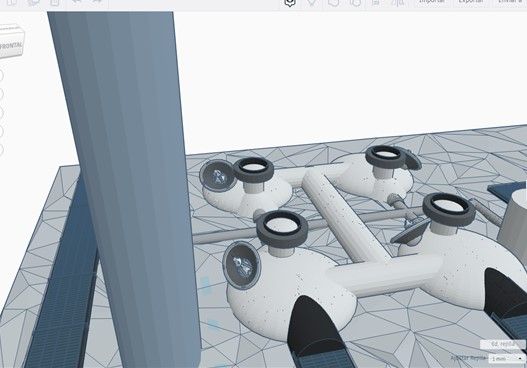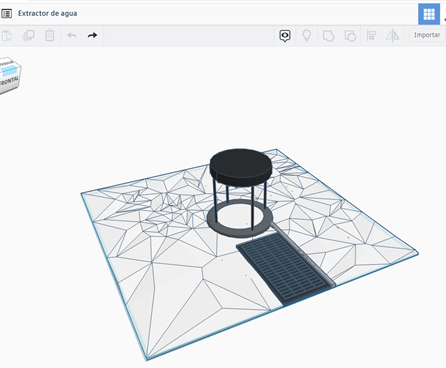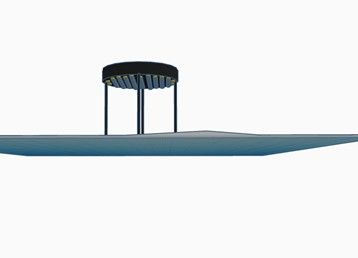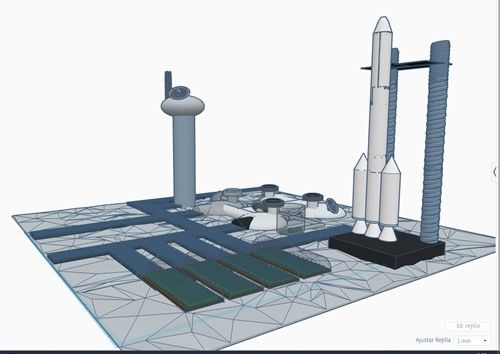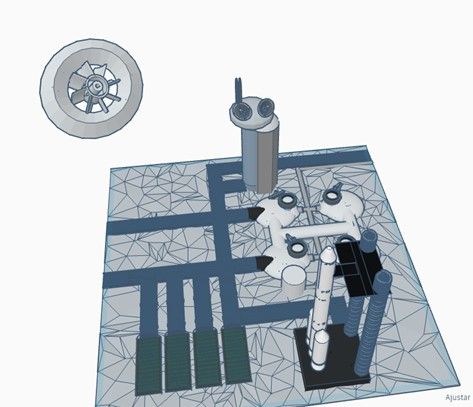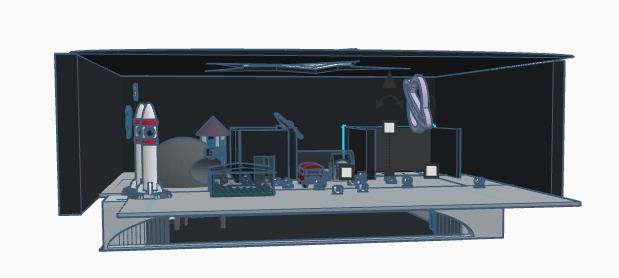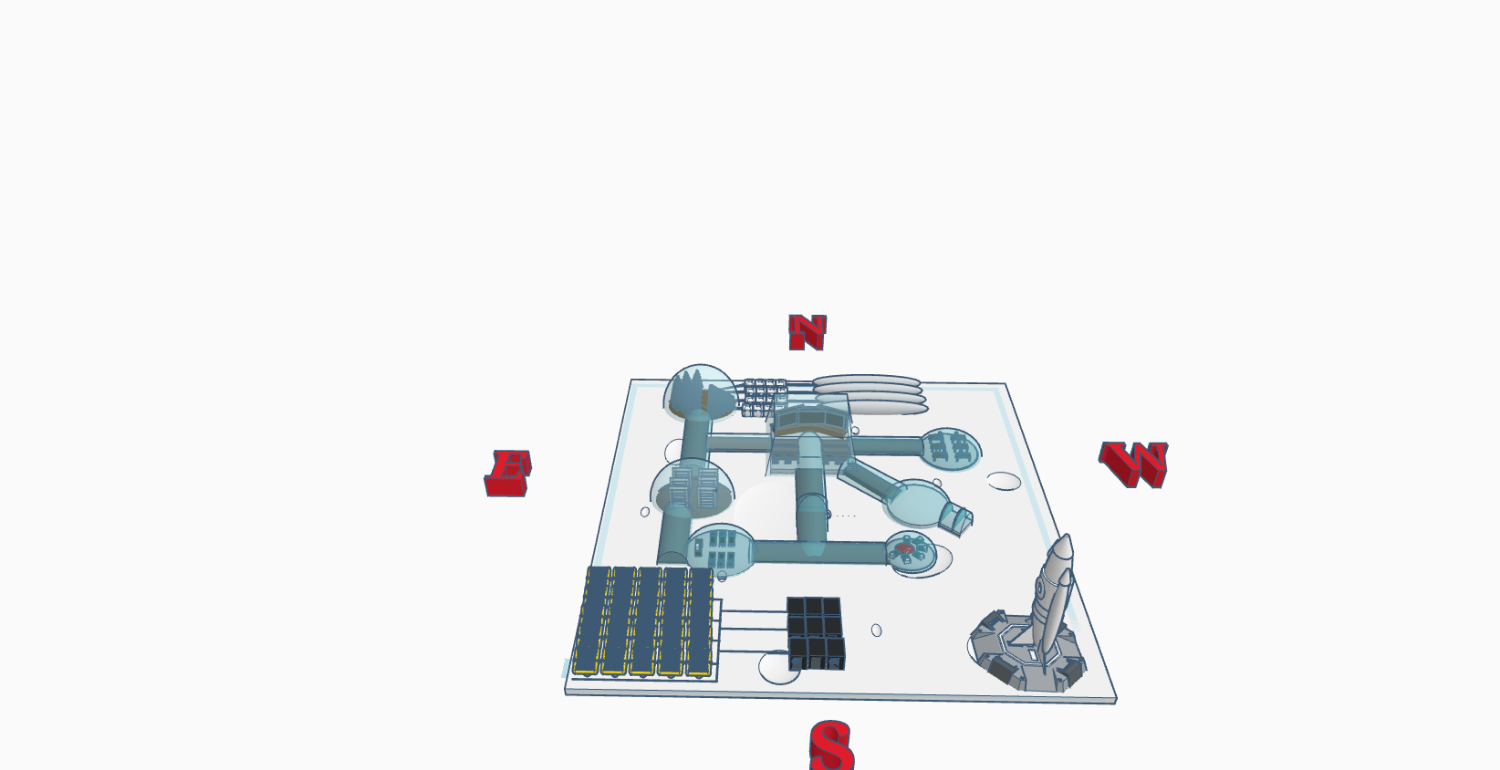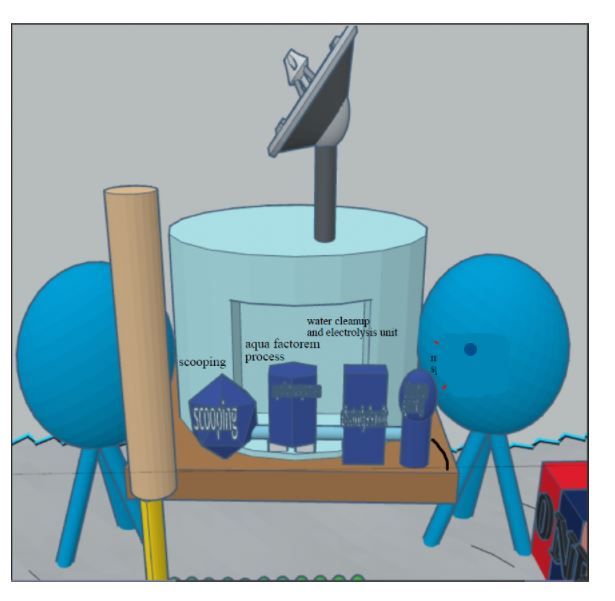Moon Camp Explorers Gallery 2021-2022
In Moon Camp Explorers each team’s mission is to 3D design a complete Moon Camp using Tinkercad. They also have to explain how they will use local resources, protect astronauts from the dangerous of space and describe the living and working facilities.
Team: Moonraker
IES José Jiménez Lozano Valladolid Spain 14 1 / 0
External link for 3d
|
Project description
Our lunar base project is committed to renewable energies, so we have designed solar panels platforms, which will be used to move the lunar electric vehicles. These roads with solar panels are currently operating in countries such as France. It is also important to add that we have designed some floating platforms that are huge fans, Indoors we have thought of assembling molded cardboard pieces to separate rooms, Any base of this type has to be able to hold breathable air, that is, it has to provide oxygen and remove carbon dioxide. The International Space Station (ISS) uses electrolysis to break down water into oxygen and hydrogen and vents capture carbon dioxide into space.
|
||||
|
Where do you want to build your Moon Camp?
Close to the lunar poles Why did you choose this location?
If the base were located in the north or south pole, the solar panels would receive constant sunlight. If the base is in equatorial regions, these will only produce power for 14 consecutive days, followed by two weeks of darkness. How do you plan to build your Mooncamp? Which materials will you use?
For the residence modules we have decided that the material used would be the Larcore A2 as it is quite light and resistant between the interior and exterior to avoid the cold, the modules will be insulated from the cold. For the control tower the 2DPA-1 material which is also very light and resistant, for the greenhouses, it will take graphene and carbon fiber. On the roof there will be huge LED lamps to ensure light. |
||||
|
Water
|
Food
|
Electricity
|
Air
|
Protection
|
|
the water will be extracted by heating the ice and being transported in large heated pipes to prevent freezing. |
The supply of food and oxygen will be done through crops and food packages for astronauts sent from Earth. |
We have thought about putting floating platforms that are huge fans, which have been tested several times in Antarctica. They are able to stay in the air; For the great fan to work, we take advantage of a kind of solar wind, it is a stream of charged particles that are released from the upper atmosphere of the Sun, called the solar corona. This plasma is mainly composed of electrons, protons and alpha particles with thermal energies between 1.5 and 10.10eV. |
The International Space Station (ISS) uses electrolysis to break down water into oxygen and hydrogen and vents captured carbon dioxide into space. |
We would have to build buildings with walls thick enough to block out radiation and wear space suits every time astronauts go outside. |
|
Describe a day on the Moon for one of your Moon Camp astronauts
Astronauts wake up in their module, exercise, clean up, and head out to begin their assigned work for the day. These jobs include the maintenance of the crops to ensure their feeding, breathing, they would continue the day checking the correct functioning of the lunar base, also the correct state of the greenhouses, and communicate with the Earth’s space center, the rest of The day is based in the control tower laboratory for research on the Moon and its behavior. |
||||



